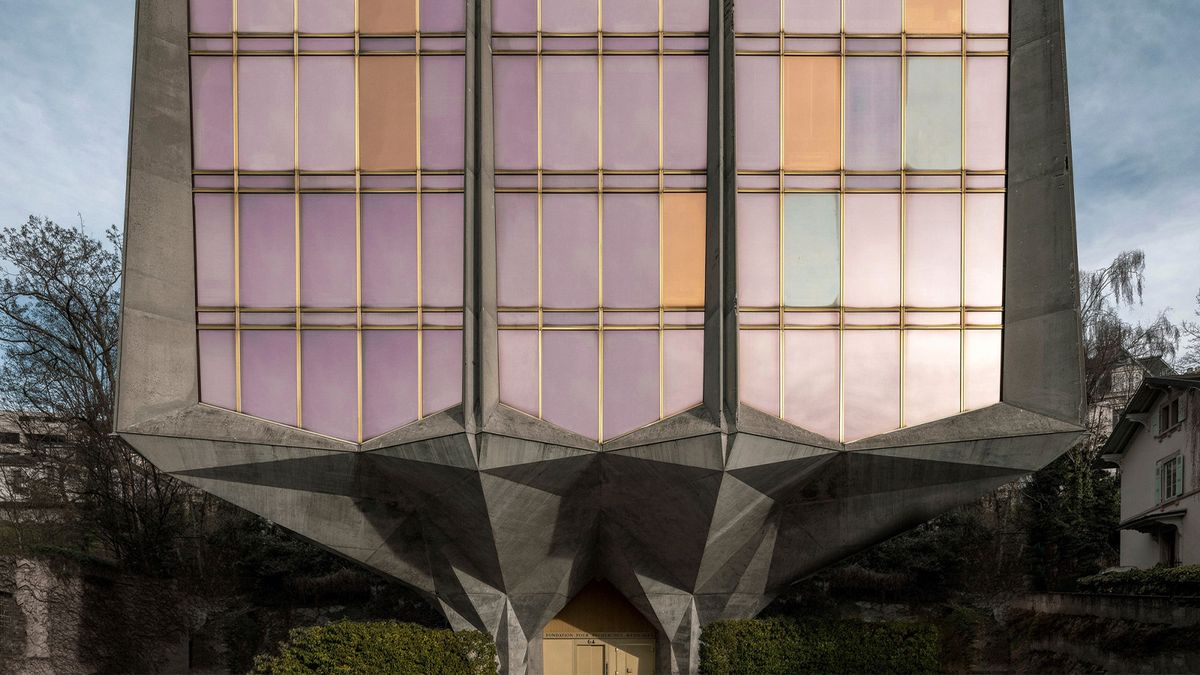Design codes from the 1950s are celebrated in a new exhibition that sees a 1958 temporary housing structure, Marabout House, brought back to life. Originally designed by Raymond Camus and built at Jean Prouvé’s workshops, the structure – at Terra Remota vineyard in Catalonia, Spain – has been fully refurbished by prefabricated architecture specialist Clément Cividino.
First created in response to the need for lightweight housing structures by the French army, the design was used as lodging during the Algerian War. French energy company EDF-GDF commissioned two versions of the 13-sided space, made from metal, for use as temporary housing in the Parisian suburbs. One was destroyed, while the other is now on display in the vineyard throughout the summer.
Marabout House: 1950s temporary housing revisited
Inside, Cividino has assembled pieces from design greats, including a dining table by Charlotte Perriand, chairs by René Martin, a lamp by Bruno Munari, and Marco Zanuso’s ‘Triennale’ sofa.
His work on the project was a natural step for him: ‘Camus was one of the first people in France to work on industrial, prefabricated housing,’ he says. ‘What’s amazing is that he worked extensively in both Russia and the United States. He also contributed to the construction of quite a lot of new towns and worked with well-known architects like Marcel Lods, Jean Dubuisson and Émile Aillaud on social housing projects. Camus was a real pioneer.’
Cividino is fascinated by the link between Prouvé and the Marabout House. ‘We have a plan signed by Prouvé and there is a photo, in the archives of the city of Nancy, of a prototype of the Marabout House at his workshop, with lots of Prouvé’s own houses in the background. At the time, there was nobody better to build such as structure than Prouvé. Afterwards, what advice or modifications he proposed to the initial design is anybody’s guess.
‘The Marabout House adheres to many of Jean Prouvé’s principles for lightweight housing structures. Prouvé himself was greatly inspired by it. He often promoted the Marabout House in the classes he gave at the Conservatoire National des Arts et Métiers in Paris and quite obviously referenced it in the gas stations he designed for Total in 1969, which also had 13 sides.’ §
http://dlvr.it/SX0l9k
Abonați-vă la:
Postare comentarii (Atom)
Step inside La Tulipe, a flower-shaped brutalist beauty by Jack Vicajee Bertoli in Geneva
Sprouting from the ground, nicknamed La Tulipe, the Fondation Pour Recherches Médicales building by Jack Vicajee Bertoli is undergoing a two...

-
Hedi Slimane pays tribute to the organic form of Jean Arp’s work Ptolémée II, in the latest itineration of the Celine Bijoux d’Artistes Proj...
-
The Sotheby’s Milan charity auction in aid of UNICEF takes place tomorrow, including 15 designs from the "Design to Move; 40 Creations ...
-
Mareterra, a Monaco project boasting contributions by Renzo Piano, Norman Foster, Stefano Boeri and Tadao Ando, is set to become a new neigh...

Niciun comentariu:
Trimiteți un comentariu